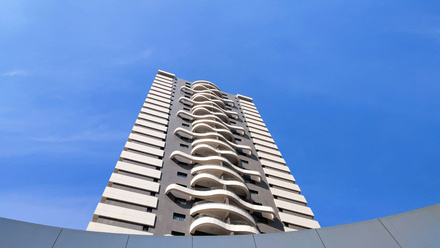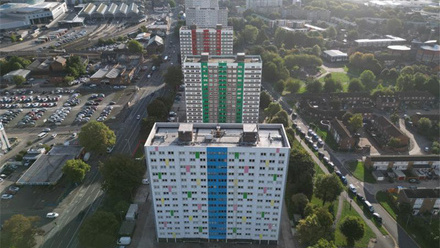Tribunal counts roof garden as 'storey' in higher risk building
The decision resulted from a first-tier tribunal (FTT) claim brought by a leaseholder of Smoke House and Curing House in Hackney Wick, east London, who was seeking wider remediation than was being offered by the owner of the property.
The claimant, Nicholas Blomfield, wanted the landlord, Monier Road Limited, to remove cladding and combustible material from an internal courtyard, balconies and roof terrace. One of the issues in contention was whether the building should be classed as a higher-risk building (HRB), which the fire-risk assessment the landlord obtained had not factored in.
Under the 2022 Building Safety Act (BSA), HRBs must be built and managed to much stricter safety standards. The act defines an HRB as a building with at least two residential units that is taller than 18 metres or has at least seven storeys. Smoke House and Curing House has ground-floor commercial space, five residential storeys and roof gardens.
Blomfield said it should count as an HRB, while the landlord argued a roof terrace on the top floor of the building did not count as a storey, meaning the building fell outside of the definition. The act itself does not address roof terraces.
Judge Martynski ruled the build is an HRB, but criticised contradictory secondary legislation and guidance on what counts as a storey.
Since the BSA became law in 2022, several pieces of secondary legislation have been added to clarify certain passages. The government has also published guidance on how to interpret certain aspects of the BSA on its website.
Secondary legislation to the BSA published in 2023 set out that a floor containing only rooftop plant or machinery does not count as a storey, which Martynski said implied a usable roof garden does count. However, government guidance published in June 2023 states that open rooftops such as rooftop gardens should not be counted when determining the number of storeys.
Martynski used the secondary legislation to make his decision, criticising the "evolution, amendment, addition to and in some cases "withdrawal" of government guidance, which he said results in a "continuously changing resource".
He said:
There is no index, no library or consistent route to these notes and a number overlap. It is challenging to know which is the latest version or to find notes that covers [sic] certain areas.
Because he classed the building as an HRB, the remediation work will have to be overseen by the Building Safety Regulator, which needs to approve plans before construction can start.
The verdict was handed down in July but only made public on 4 October.





